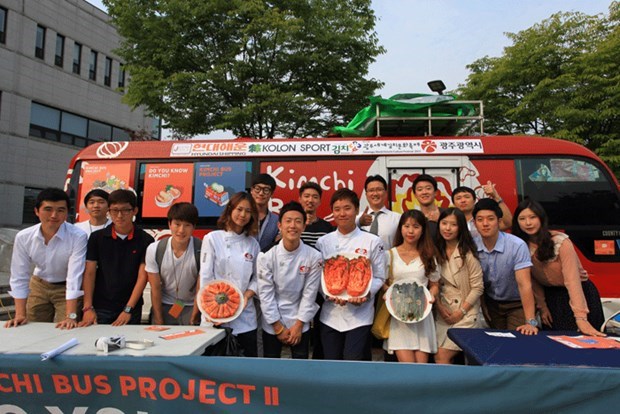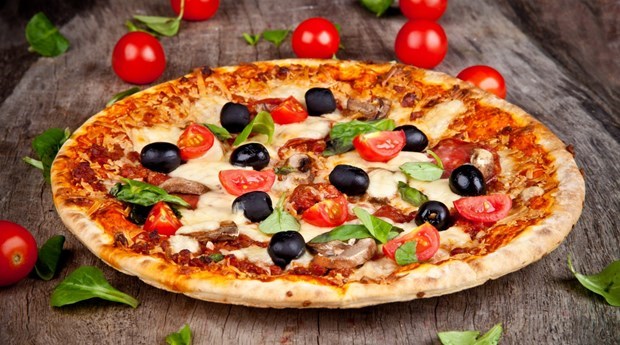From French style meal, traditional Washoku cuisine of Japan, Croatian culinary art of ginger biscuits, to having raw fish and wine in winter festival in Belgium, culinary culture has been recognized more and more by UNESCO.
Although
cuisine does not take a big amount of UNESCO recognized heritages but it is
definitely an attractive and potential one, which has been paid lots attention
of and invested to in order to place this delicate value of culture on its
deserved position.
The confidence of the
French
French
cuisine is an elite summit of European cuisine, which was recognized as
Intangible Cultural Heritage of the Humanity in 2010. The City of Light is
hometown of renowned chefs, birthplace of haute cuisine, as well as where
style-shaped the standard of precious etiquettes.
For
centuries, the French have always believed that nothing could satisfy the taste
and uplift the spirit as well as having a good meal with family and friends. At
an agricultural fair in 2008, President Nicolas Sarkozy proudly declared,
"French cuisine is the best of the world and needs to be put on the list
of cultural heritage of humanity by UNESCO".
France
is also homeland of haute cuisine, which is obviously because the term just
came from France. “Haute cuisine” is a term to describe a culinary school that
use expensive selected ingredients, elaborate cooking, exquisite decoration,
and proper table manner. Furthermore, those dishes should be served with
high-class wine.
Moreover,
the peerage is also presented by delicate and elegant etiquette. The French
have no what is called fast food or fast meal. Every meal is a piece of art and
if you walk in a professional kitchen or a restaurant, you would be an artist.
Their dining etiquette includes careful and particularistic decoration in every
dish, sitting position of diners, and table setting.
It’s
proper to say that a French meal is a tight etiquette: starting with aperitif,
having appetizer, main course (vegetables and grains, fish or meat), cheese or
dessert, and ending with digestif (a special type of wine to improve digesting
process). The meal emphasizes the importance of reunion, quiche, and harmony
between diners and natural products. Key elements of French cuisine are
plentiful cooking recipes, carefully selected ingredients, delicate combination
between wine and food, and eye-catching table setting.
Japanese strategies
The
Japanese were so proud when Japanese traditional Washoku cuisine was recognized
by UNESCO in 2013 because Washoku is not a specific dish but the whole culinary
culture. The idea of suggesting UNESCO to recognize Japanese traditional food
as the world intangible cultural heritage was started by chefs from former
capital Kyoto in order to protect traditional cuisine from fast food invasion.
That was a huge ambitious of the Japanese when they suggested UNESCO to
recognize not one specific dish but spirit of the whole traditional cuisine.
In
the proposal, the Ministry of Forestry, Fisheries & Agriculture and
Cultural Heritage Committee had included a definition of Washoku: "Created
from the spirit of respecting fundamental nature of the Japanese people; Be
social practices are closely related to traditional events, such as the new
year, new crops, or harvest festivals; And to increase cohesion between families
or regions ".
In
Japanese, “washoku” is to distinguish Japanese food from “yoshoku” – food with
exotic influence. An important feature in Japanese traditional food is seasonal
and “backyard” products, meaning they always use in-season products to cook and
produce from their backyard to garnish. They believe that in order to maintain
the nutritional balance, each meal needs to have 5 colors (white, red, yellow,
green, and another dark color) and to contain harmony tastes (salty, sour,
sweet, bitter, and umami).
Furthermore,
Japanese chefs always pay attention to aesthetic aspect so that each dish
should look like a piece of art. The Japanese prefer mild and healthy food so
they avoid using garlic, pepper, and oil. Chefs are so picky choosing dishes
for their food, in which the favorite materials are old pottery and lacquer in
multiple colors and different shapes.
Kimchee and Pizza
race
Even
though Kimjang – Korean culture of pickling kimchee – was recognized as
Intangible Cultural Heritage of the Humanity in 2013, the Korean have still
kept advertising their national treasure of food. While national strategy
planners have increased exported goods, youngsters have made diversification
for the love of Korean cultural symbol.

Red buses with kimchee images – “Korean national treasure” – go around the world to introduce the dish.
The
students of Hotel Management, Kyunghee College, made a trip to go around the
world on a rustic bus and a fridge packed with pickled nappa cabbage. Starting
from 2011, the bus has passed by 140 cities in Europe, North America, and
Japan. In 2014, the red bus with kimchee images kept taking the group of
students to the final journey in Latin America. At every stop, they presented
how to make kimchee and set up a Korean traditional meal then invited local
people to the on-the-side-way meal.
Being
also famous and world wide but Italian pizza have not found their deserved
position in culinary world. Former Agriculture Minister Alfonso Pecoraro Scanio
actively started a campaign, which they would collect signatures to suggest
UNESCO recognize Arts of Napoli pizza as intangible cultural heritage. He
desired to introduce Italian pizza to the world and to establish possession
right of their pizza recipes.

Napoli pizza was recognized by EU as protected traditional specialty.
In
2009, Napoli pizza was recognized by EU as protected traditional specialty. It
means whoever makes Napoli pizza must prepare right ingredients and properly
bake as standardized process, such as pizza crust must be hand made, San
Marzano tomatoes and Mozzarella cheese from buffalo milk must be used, pizza
must be baked in charcoal or wood oven, and decoration style must be followed.
Writer: Quynh Anh/The World & Vietnam Report
Translator: Thu Pham